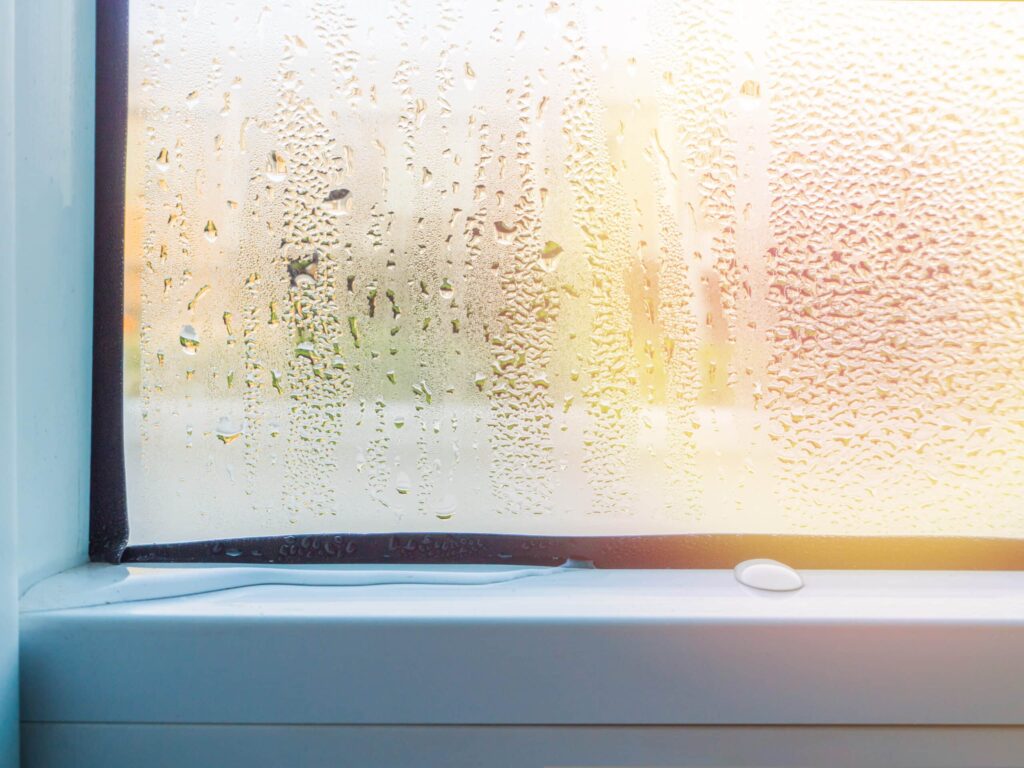Rising temps, melting snow and April showers may lead to May flowers, but they can also lead to leaks in your building envelope. And leaks mean (dun-dun-dun) water infiltration! Water entering the building envelope can pose numerous problems from the seemingly mundane water stains to the more alarming deterioration of materials such as wood or dry wall or, worse yet, deterioration of structural members and cladding systems. Performing regular maintenance on your building envelope can help prevent water infiltration from happening in the first place, and knowing the potential causes and where to locate the source of water infiltration is key.
Damaged Roof Membrane
The roof membrane is used to create a watertight covering that protects the interior of a building. They can be made of modified bitumen, synthetic EPDM rubber, or PVC and are used on flat and low slope roofs. Due to expansion and contraction of the roof membrane with temperature fluctuations, wrinkles or blisters can form and lead to cracks. When this happens, it can cause water to accumulate i beneath the membrane. Eventually, this can cause water infiltration into the interior of the building, compromising the overall water tightness of the building envelope. Regular visual assessment of your roof membrane can prolong the life of your asset.
Open or Damaged Flashing
HVAC units, plumbing ventilation, chimneys and ductwork are just a few items that are common on the rooftop. These systems create roof penetrations that have flashing around them which acts as the barrier between the penetration and the roof surface. Flashing can come in a variety of materials from steel to aluminum to a membrane. However, due to the passage of time and exposure to weather elements, such as high winds, flashing can fail and cause leaks. When this happens air and water can enter the structure below. The best way to prevent flashing leaks is to have your roof regularly inspected for corrosion, damage or deterioration.
Lintel Deterioration
A lintel is the horizontal support that spans an opening in a wall; such as a door or window. It’s essentially acting as a supportive shelf for the masonry above. Lintels are often made of steel which is prone to rust from corrosion. the masonry bearing on the lintel can crack and deteriorate over time allowing moisture to seep in and weaken the structural integrity of the lintel. If you notice areas of cracking around the corners above windows or doorways, this is one of the telltale signs of lintel deterioration. Regularly inspecting masonry around building openings for cracks and signs of deterioration whether from age or water penetration, can prevent costly expenditures from arising down the road.
Missing/Deteriorated Joint Sealant
As building foundations settle this can create wall movement which leads to the deterioration of mortar joints in masonry. Additionally, general exposure to weather elements can also cause cracks or mortar to fall out altogether. Caulking around windows, doors, and other joints in the building envelope can also become brittle and crack over time. Failed sealant joints can lead to pests, air penetration, water infiltration and general energy loss in your building envelope. Proper caulking and waterproofing can prevent water penetration and potential leaks.
Foundational Cracks
Over time, poured concrete foundation walls can get cracks that affect the underlying structure of the building it supports. While not all cracks threaten the structural integrity of a building, those that do can pose a larger problem. If large enough, cracks can lead to water penetration, but the reverse is also true. If a foundation is not properly waterproofed, pooled water can cause erosion and subsequently lead to cracks. Water in the soil surrounding a building creates pressure on its foundation. If this water isn’t funneled away from the structure’s foundation, it can cause cracks and leaks that lead to water penetration and failure of the building’s structural integrity. Regularly inspecting your building’s foundation for new cracks and monitoring the size of existing cracks, can prolong the life of your building envelope.
If you have concerns about water and air penetration or the energy efficiency of your building envelope, Technical Assurance can partner with you to alleviate them. With almost 30 years of experience, we offer comprehensive vertical façade management that includes masonry and concrete exterior walls, curtain walls, balconies, exterior insulation finishing systems (EFIS) and fenestrations (doors, windows and skylights), along with structural engineering consulting to diagnose the cause of structural distress. Technical Assurance can remediate issues and develop the best course of action to prevent problems from happening in the first place.
Contact Us Today!
Technical Assurance can help you take a proactive approach to ensure optimal performance of your building envelope. Contact us today for a consultation and assure that your investment lasts well into the future.

